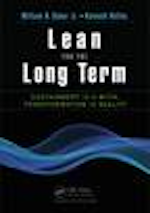What are you doing to improve, and how do you know if you’re winning?
If you survey American manufacturing leaders and ask them these questions, no doubt you would receive many varied replies. There are lots of approaches to continuous improvement.
I remember our first application to the Malcolm Baldrige National Quality Award (MBNQA), in 1990. We knew we were good—we worked hard, we were smart and many of our products were innovative.
What else do you need?
Our Chief Executive saw trouble ahead and fully supported the MBNQA as an excellent set of criteria to pursue for drastic improvement and as a game changer. The Department of Defense (DoD) budget was headed down and competition was going to increase for the smaller portions and dollars of revenue.
Since DoD budgeting was under an annual contract basis that was dependent on the nation’s annual budgets that were then allocated to various programs and projects, we had a little time before we would see the impact on the bottom line. However, the CEO saw we needed to take action now—the proverbial “burning platform.”
So we applied to the MBNQA, which was barely underway. Motorola had won the first award, and they were a good role model with lots of recognition and clout at the time.
After we submitted our application and then upon follow-up, we explained to the examiners and outlined our systems, goals and processes based on the criteria of the award. We all smiled and felt that we had impressed them.
A short time later we received a courteous letter explaining that while we were doing many things right, we did not measure up enough to qualify for a site visit, much less the award!
If you do not have continuous improvement goals based on benchmarking and benchmarks, you do not know how you compare!"
They sent us a feedback report identifying five areas as opportunities for improvement. We knew what the answer was … “they did not understand us! We were a DoD business, and the criteria were not appropriate for us! And so on and so on. We’ll get back to work doing our own thing, now.”
No such luck!
Our CEO asked, “What did we learn and what were the opportunities/shortcomings that we need to fix.” He assigned five vice-presidents to be personally responsible to fix each of the opportunities.
My life changed at this time.
How We Capitalized on the Opportunity
One of our “opportunities” was that we thought we were good, but the Baldrige Criteria at that time reflected a different perspective: "If you do not have continuous improvement goals based on benchmarking and benchmarks, you do not know how you compare!"
Our senior vice president of manufacturing was assigned to fix this “opportunity” quickly—before the next application cycle, which was six months off.
Two of us were selected to learn what benchmarking was and to become experts while transforming how we measured success. Xerox’s Robert C. Camp had just published the first book on benchmarking—Benchmarking: The Search for Industry Best Practices that Lead to Superior Performance, which we found in bookstores (This was before the internet and Amazon!).
...we needed to benchmark the Benchmarking theory and process...
It was obvious that we needed to benchmark the benchmarking theory and process with Bob Camp to learn fast. After explaining our predicament to Bob and learning from him, he mentored us as we went to work and trained managers in benchmarking theory, process best practices and facilitating projects across the enterprise.
Two years later in 1992, after hundreds of management briefings and specific benchmarking projects, all of our performance metrics had identified benchmarks and goals—we won the MBNQA.
We were the first DoD company to do so.
By the way, the Site Visit Examiners stated that benchmarking was identified as a “strength.”
Benchmarking Basics
My motive for telling you this story is so that I can ask you the same question:
“How do you compare? If you don’t know you are losing the competitive race!”
All performance measures need to have a goal that leads you toward surpassing both your industry benchmark and the global benchmarks outside your industry. Like the quote from Alice in Wonderland “If you don’t know where you are going, any road will do.”
Today, benchmarking can be much more efficient with lots of data available from many sources: online and from various research organizations. The focus should be on the processes and looking at organizations that have processes similar, but not necessarily identical, to yours.
For instance, Southwest Airline crews studied Indianapolis racecar crews to learn their best practices. The theory was, if the planes are not in the air or racecars on the racetrack, they are not making money. In lean management terms: time on the tarmac or in the pits is “waste.”
What is the benchmark pit time for both crews? If all team members know their goals are based on success, they can go home knowing whether they won that day, and every day.
Do you know what your personal benchmark is? Do your company goals align with benchmarks to assure success and winning?
Here are several benchmarking best practice highlights that will help you answer those questions:
- Is management willing to change your core processes based on what you find in your benchmarking research? Put them on the team to help.
- Understand the baseline of your process, both the value stream and metrics. This needs to sorted out so all team members agree with the current state.
- Identify benchmarking sources, including research organizations, leading companies, Internet sources, etc. All team members can help with the research.
- Remember: when defining your performance metrics, define what is counted and what is not in order to make sure the data compares “apples and apples.”
- As you compare measures, investigate what are the best practices that lead to that superior performance. You probably don’t want to copy, but how do you learn and adapt them to your company? You may want to adapt and combine best practices from several companies as you learn and adapt.
- Recruit management to be involved in the data collection and analysis, which will help “pull” everyone toward positive change.
- Remember that change and experimentation is what continuous improvement is all about. Always be on the journey never become stagnant! It’s about Transformation every day. What do you think the future state performance will be? Set a goal to by-pass all others.
Now, one more time: Do you know how you compare?
Good Luck.





